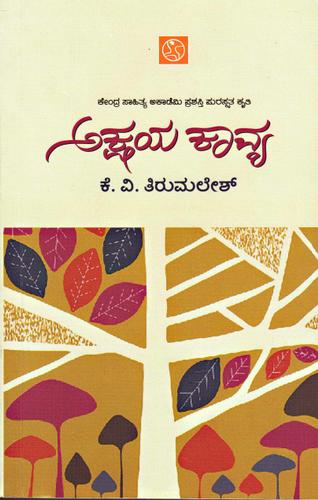In Akshaya Kavya, poet K.V. Tirumalesh’s award winning work, there are constant meditations on the nature of language, the relationship between word and meaning, and glimpses of the poet’s own life
Akshaya Kavya by K.V. Tirumalesh
Abhinava, Rs. 150
Dr. K. V. Tirumalesh’s first collection of poetry,Mukhavadagalu (Masks, 1968), was written in the Navya or Modernist mode; but, very soon, he began to explore ways of transcending the constraints of Modernism, culminating in his famous Mahaprasthana (1990). Till today, he has published eight collections of poetry, his most ambitious and experimental work being Akshaya Kavya (2010), which has won the Sahitya Akademi Award for the year 2015. Today, though he can loosely be called a post-modernist poet, he declares, “I will not willingly identify myself with any movement” (“My Challenges in Poetry”, Muse India). However, Tirumalesh has also written novels, short stories, regular columns, and criticism besides scholarly works on Kannada grammar and linguistics. Being a bilingual writer, he has written on language and linguistics in English also, his well-known work being Derrida’s Heel of Achilles. A few of his translations from English to Kannada include the poetry of Ezra Pound and Wallace Stevens.
Talking of his Akshaya Kavya, Tirumalesh says, “I would like to call it an epic poem.” In his Preface, he confesses that the voluminous work does not have any “characters, situations, style and grammatical person-tense markers.” We can add that it has no punctuation also.
When one begins to read the work, one finds it a “labyrinth,” full of recursive themes and images.
Loosely, it can be viewed as a brilliant and colourful ‘collage’ of motifs and word-pictures or images. It was Georges Braque and Picasso who practiced this technique of collage with great success in painting, and hence it is no wonder they are often alluded to in Akshaya Kavya. In this world of ‘ever- full poetry,’ fleeting moments of personal experiences, passage of Time, works and characters in Indian and European literatures, philosophers and artists – all jostle with one another. We find here miniatures of philosophers like Buddha and Nietzsche, poets like Vyasa and Dante, literary characters like Draupadi and Beatrice. Interspersed with such word-pictures, there are constant meditations on the nature of language, the relationship between word and meaning, and glimpses of the poet’s own life.
Here are a few representative passages in which the poet reflects on word and meaning, the purpose of poetry and the mystery of poetry.
“What is the least demand of the poem from the poet?
Does it demand active involvement in a big social struggle,
in broad daylight, visible to all? Or, total surrender before a great force?
No, none of these; / all these are the domain of actors.
What is required here is purity of everyday – life,
total self-control, not the figure that comes out of the darkness
of the imbalance between speech and action.” (p.64)
“Words sitting near words / what do they say or do?
They are talking with each other / like shy people muttering something.
They are quiet, they pinch each other / touch and embrace each other/
whisper some secret in others’ ears.
They place their hands on the head of others/ and reach out to those sitting away from them / or, they just tease.” (p.201).
There are two long poetic passages at the end of the volume. The first one (pp. 380-409) gives us snippets from Buddha’s life and the way we respond to the Buddha today. The snippets include Buddha’s sermons on the body and soul, Angulimala and Kisagautami episodes, Buddha’s idols, Ashwaghosha’s narrative about him, and such. Importantly, all the teachings and incidents in the life of Buddha are viewed from a critical angle. The last passage (‘What remains is as Usual – Now’, p. 458-478), mostly autobiographical, records the poet’s wrestling with words and meanings. A highly emotive paragraph runs thus:
“O my very personal god! / You are a witness / to my conflicts/
the ambition to include the entire history/ the intention to hold the sky
on my palm./ You used to laugh and ring warning bells . . .
But I didn’t believe you” (p. 460).
“Not being in the main stream of Kannada, I have been writing such invisible poetry,” Tirumalesh says ruefully in his article “My Challenges”.
I am positive, with Akshaya Kavya and the recognition of Sahitya Akademi, his poetry will become very, very visible.
source: http://www.thehindu.com / The Hindu / Home> Features> Friday Review / C.N.Ramachandran /Bengaluru – February 18th, 2016
